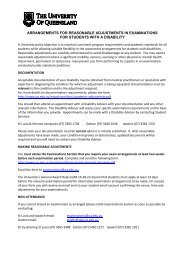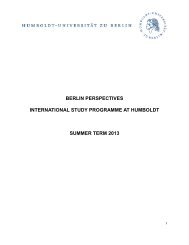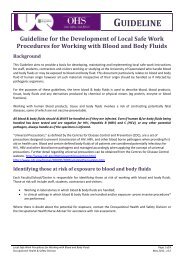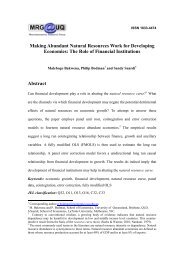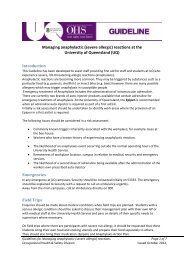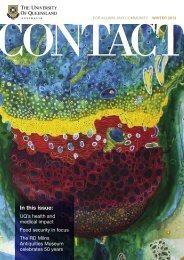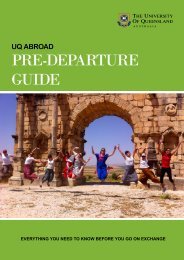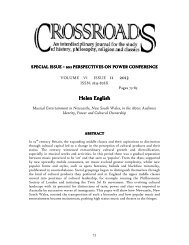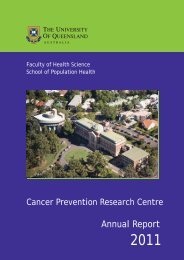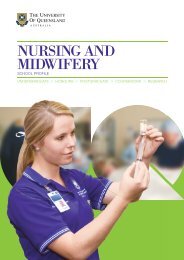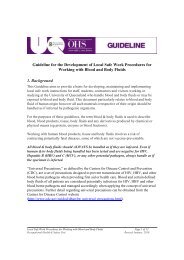Review of the Social Capital Literature - University of Queensland
Review of the Social Capital Literature - University of Queensland
Review of the Social Capital Literature - University of Queensland
Create successful ePaper yourself
Turn your PDF publications into a flip-book with our unique Google optimized e-Paper software.
At <strong>the</strong> state level greater social capital may lead to increasing politicalparticipation, and hence affect government policy and action (Kawachi 1999).Although <strong>the</strong>re does appear to be sound <strong>the</strong>oretical evidence <strong>of</strong> <strong>the</strong> associationsbetween social capital and health, <strong>the</strong>re has been little empirical researchundertaken to substantiate this <strong>the</strong>ory. Kawachi et al have conducted what <strong>the</strong>ybelieve to be <strong>the</strong> ‘first empirical demonstration <strong>of</strong> an association between socialcapital and mortality’ (Kawachi, Kennedy et al. 1997). Building upon o<strong>the</strong>rresearch into <strong>the</strong> relations between income inequality and mortality rates, <strong>the</strong>yhypo<strong>the</strong>sise that income inequality is related to reduction in social cohesion andthat disinvestment in social capital is in turn associated with increased mortality.Working with data from <strong>the</strong> US General <strong>Social</strong> Survey <strong>the</strong>y aim to conduct astate-level comparison <strong>of</strong> variations in social capital, income inequality andmortality rates. <strong>Social</strong> capital is measured using weighted responses to two itemsfrom <strong>the</strong> survey. Level <strong>of</strong> civic engagement is measured by per capita number <strong>of</strong>groups and associations to which residents in each state belong (1997: 1492).Trust in o<strong>the</strong>rs, <strong>the</strong> second component <strong>of</strong> social capital, was assessed byresponses to <strong>the</strong> two GSS survey items on trust and taking advantage (seesection 3.2.3 above). They found income inequality to be strongly correlated withboth per capita group membership and lack <strong>of</strong> social trust, while both social trustand group membership were associated with total mortality. A major finding <strong>of</strong><strong>the</strong> study is that <strong>the</strong> size <strong>of</strong> <strong>the</strong> gap between <strong>the</strong> rich and <strong>the</strong> poor is powerfullyand negatively related to level <strong>of</strong> investment in social capital. They conclude that<strong>the</strong> data support <strong>the</strong> hypo<strong>the</strong>sis that income inequality leads to increasedmortality via disinvestment in social capital.More recently Siahpus h and Singh (Siahpush and Singh 1999) have alsoconducted an empirical analysis into <strong>the</strong> relationship between social integrationand mortality. Conceptualising social integration as a component <strong>of</strong> social capital(Siahpush and Singh 1999: 571), <strong>the</strong>y work upon <strong>the</strong> general hypo<strong>the</strong>sis thatsocial integration leads to lower levels <strong>of</strong> mortality in Australia. <strong>Social</strong> integrationis measured by indicators such as; percentage <strong>of</strong> people living alone, divorcerate, unemployment rate, proportion <strong>of</strong> people who are discouraged job seekers,and unionisation rate. Drawing upon data from <strong>the</strong> Australian Bureau <strong>of</strong> Statisticsdatasets from 1990-1996 results show that higher levels <strong>of</strong> social integration, asmeasured by all indicators except unionisation, were associated with lowermortality rates. With unionisation, higher levels were associated with increasedmortality rates (Siahpush and Singh 1999: 571). The authors note that <strong>the</strong>irfindings relating to unionisation appear to contradict those <strong>of</strong> Kawachi (Kawachi,Kennedy et al. 1997), and suggest this is due to <strong>the</strong> fact that Kawachi included avariety <strong>of</strong> groups in <strong>the</strong>ir measurement <strong>of</strong> group membership. Siahpush andSingh suggest that in <strong>the</strong> light <strong>of</strong> <strong>the</strong>ir results, it may be unwise to put all groupstoge<strong>the</strong>r and assume group membership will always have a positive effect onhealth (Siahpush and Singh 1999: 575). 44 A potential problem in this study is <strong>the</strong> authors’ interchangeable use <strong>of</strong> social integration andsocial capitalFebruary 2001 DRAFT ONLY 20


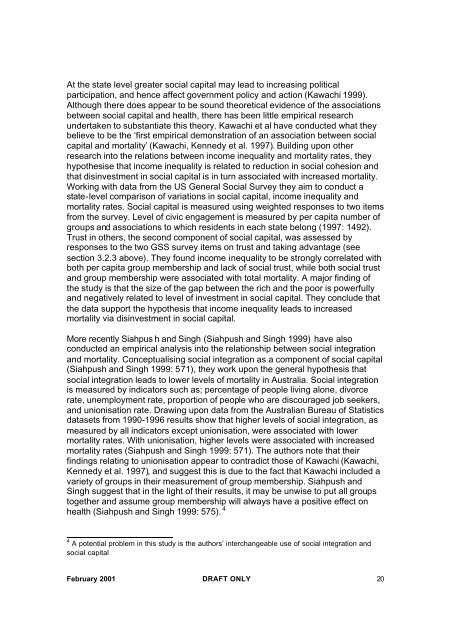

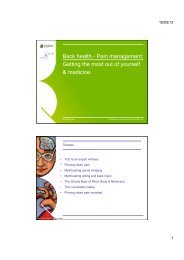
![Recycling [ PDF, 62KB ] - University of Queensland](https://img.yumpu.com/51805185/1/184x260/recycling-pdf-62kb-university-of-queensland.jpg?quality=85)
